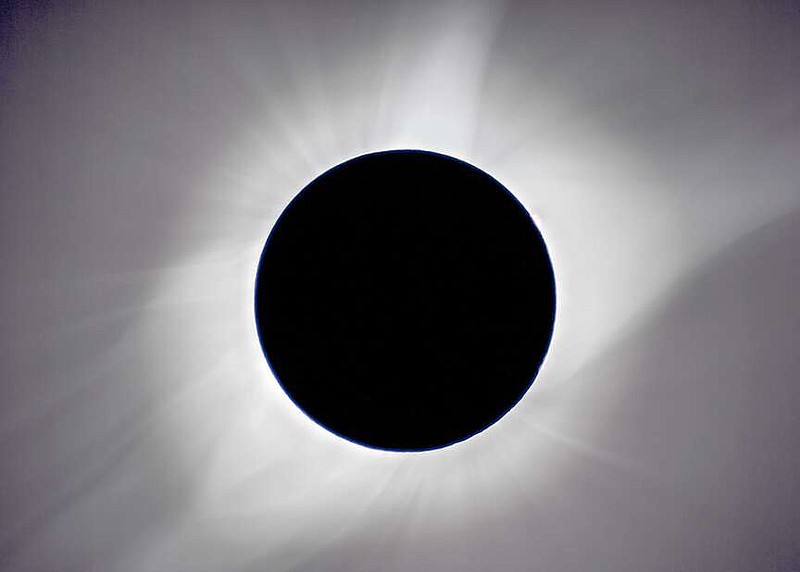The total solar eclipse is coming April 8. How to prepare...
If you want to view or photograph the total solar eclipse of April 2024, let's look at some safety issues first of all.
Anyone wanting to view or photograph this eclipse absolutely must wear safe eclipse eyewear. The only safe time to look directly at the Sun is during totality. Any other time, you must wear the eyewear. Even the slightest slit of sunlight is enough to seriously damage your retina. Children must wear safe eyewear, too, and this is the responsibility of parents or adults. This eyewear may be obtained many places and using your browser, you can locate a vending site. Explore Scientific in Springdale sells them in bundles.
Prior to totality, the shadow of the Moon will move across the face of the Sun. Totality will then occur, and if you are on the line of totality, this should last about 4 minutes. A few seconds before totality, a tiny slit of the Sun will form the Diamond Ring Effect. Look this up. It is spectacular.
Then, the shadow of the Moon will pass off the Sun in the opposite direction from which it began to eclipse the Sun.
Many people will be going to locations just a little east of Russellville to see the eclipse, and by now most sites will have been taken or rented. Find a map of the line of totality on your browser and find other places in Arkansas to see it. This will be one of the most widely viewed eclipses in American history, so stake out your viewing site now. I will be traveling to Texas to photograph this eclipse. Be aware of the weather. This will be April and any kind of bad weather could be a problem.
If you want to photograph the eclipse, wear safe eyewear while you are doing this, too. If you have only a normal lens (50mm focal length or so) I wouldn't bother to photograph this eclipse. The image will be too small. Just see it with your guarded eyes. The same goes for your phone -- too small an image.
What you need is a telephoto lens of at least 300mm focal length or more. I would set ISO at 200, lens wide open, and take a series of photos from 1/2000th. A second to perhaps 2 seconds to get the extended corona. It is easier to correct for overexposure than underexposure so if you make an error, overexposure is the mistake to make.
Get sharp focus and use a tripod. Focus on any Sun spots that may show on the surface of the Sun or the edge of the Moon as it crosses the Sun's face. Rehearse your procedure several times before the eclipse. When the eclipse happens, people get very excited and if you don't practice, you may not follow an organized procedure. Read any good sources on eclipses of the Sun before the event so you will know what to expect. The more you know, the more you will see/photograph.
I have included an image of totality I made in 2017 from Oregon. I used a 450 mm telescope and a Canon off-the-shelf digital camera and made over 300 images. (I was very busy). The photo I have included here is a composite of 18 of the best images, stacked on top of one another to get a final composite. This is an advanced technique but I think there will be readers of this column who could do this.
Above all, be safe. This eclipse will be a great life-time experience for all who see it. Be very careful -- the Sun is very dangerous to look at without safe eyewear. Good Luck.
David Cater is a former faculty member of JBU. Email him at [email protected].

